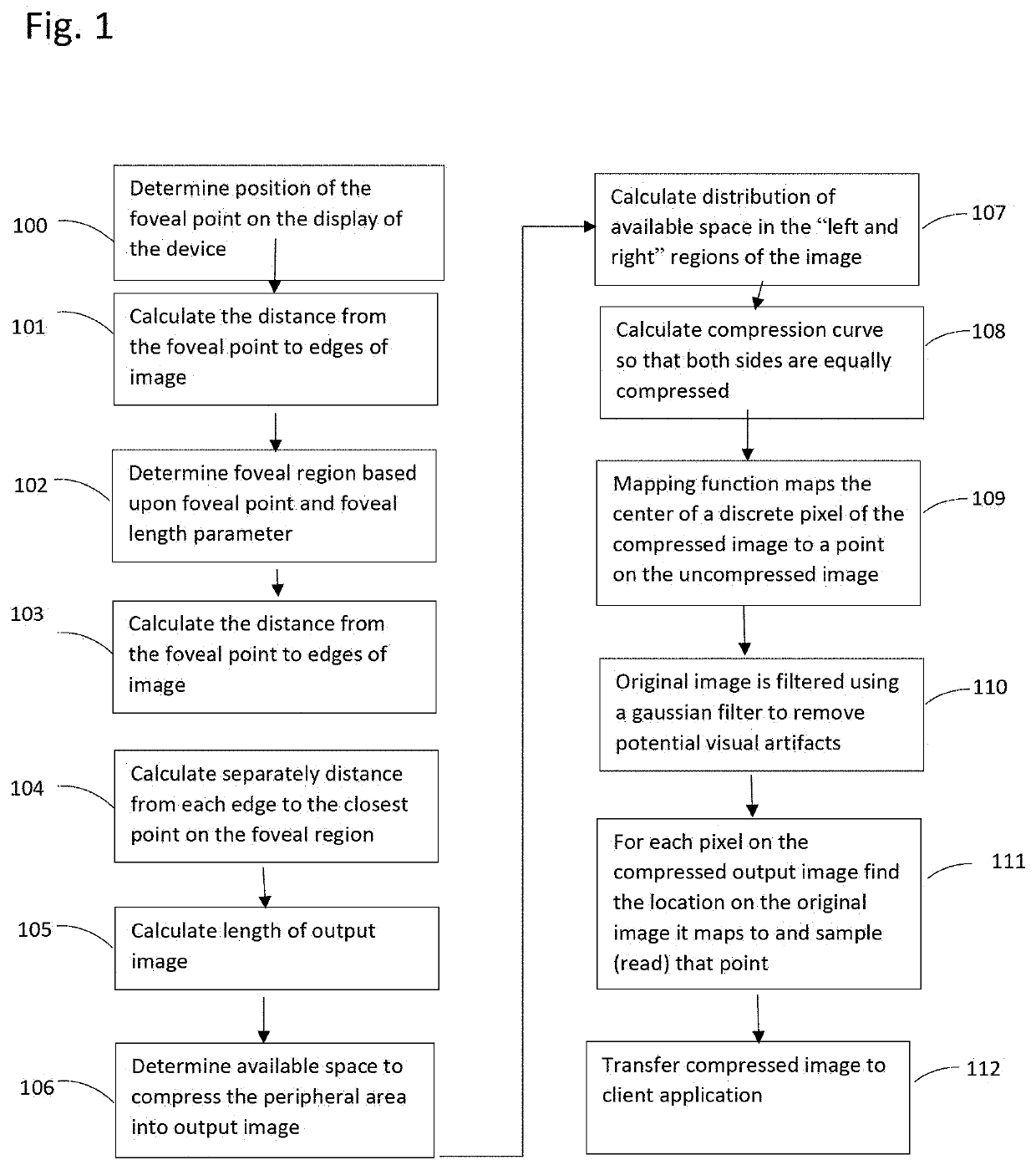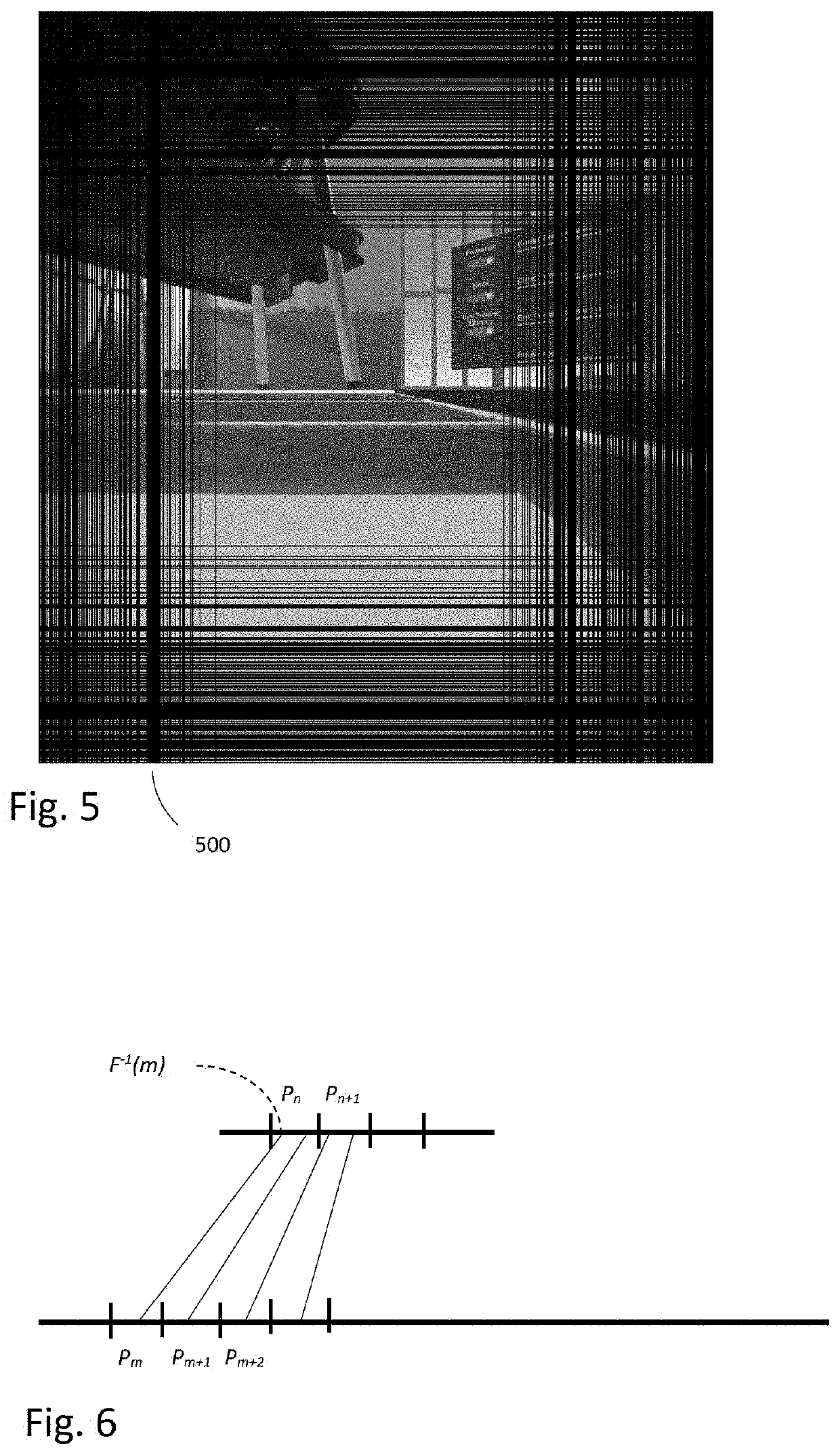Method of compressing image data for network transport
a network transport and image data technology, applied in the field of digital imaging and processing, can solve the problems of reducing the bandwidth and time requirements of image transmission, and shortening the latency of the viewer's eye moving
- Summary
- Abstract
- Description
- Claims
- Application Information
AI Technical Summary
Benefits of technology
Problems solved by technology
Method used
Image
Examples
Embodiment Construction
[0025]Foveated rendering and foveated transport allows for improved rendering performance by reducing the resolution of the parts of an image that are in the peripheral region of a viewer's vision. Thus, the viewer will not notice the degraded resolution within their peripheral vision. The reduction of resolution is performed through compression and filtering algorithms which “throw away” unneeded resolution, such as by simply not transmitting every other sample value for a 50% reduction in acuity.
[0026]In one embodiment, for a given original full resolution image to compress, the system will first, determine position of the foveal point on the display of the device 100. Foveal point detection may be performed by an eye tracking system associated with the image display client, which is well known and will not be discussed further herein. After the foveal point 210 on the display 200 is determined the system will begin the process of separating the full-resolution image into a foveal...
PUM
 Login to View More
Login to View More Abstract
Description
Claims
Application Information
 Login to View More
Login to View More - R&D Engineer
- R&D Manager
- IP Professional
- Industry Leading Data Capabilities
- Powerful AI technology
- Patent DNA Extraction
Browse by: Latest US Patents, China's latest patents, Technical Efficacy Thesaurus, Application Domain, Technology Topic, Popular Technical Reports.
© 2024 PatSnap. All rights reserved.Legal|Privacy policy|Modern Slavery Act Transparency Statement|Sitemap|About US| Contact US: help@patsnap.com










